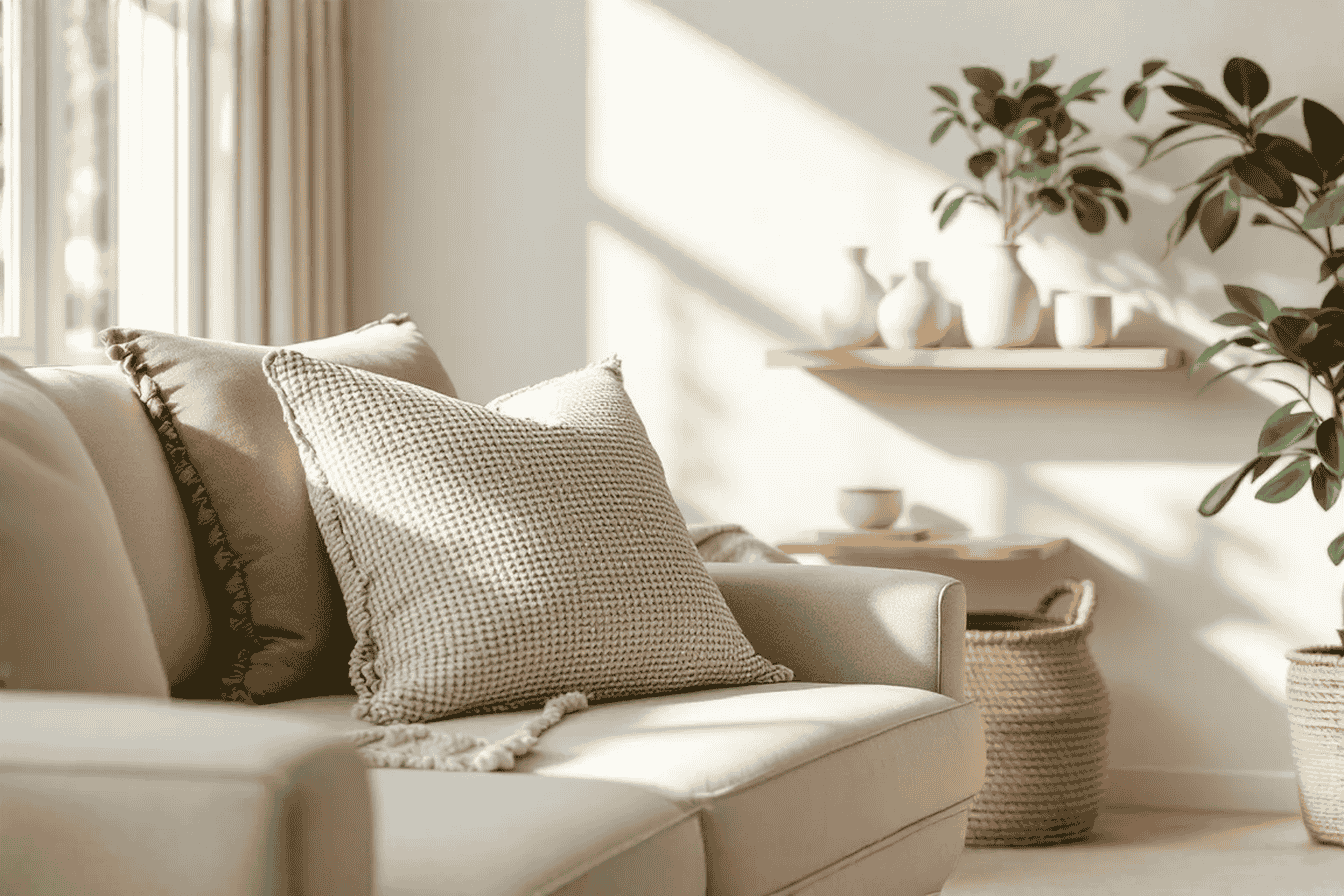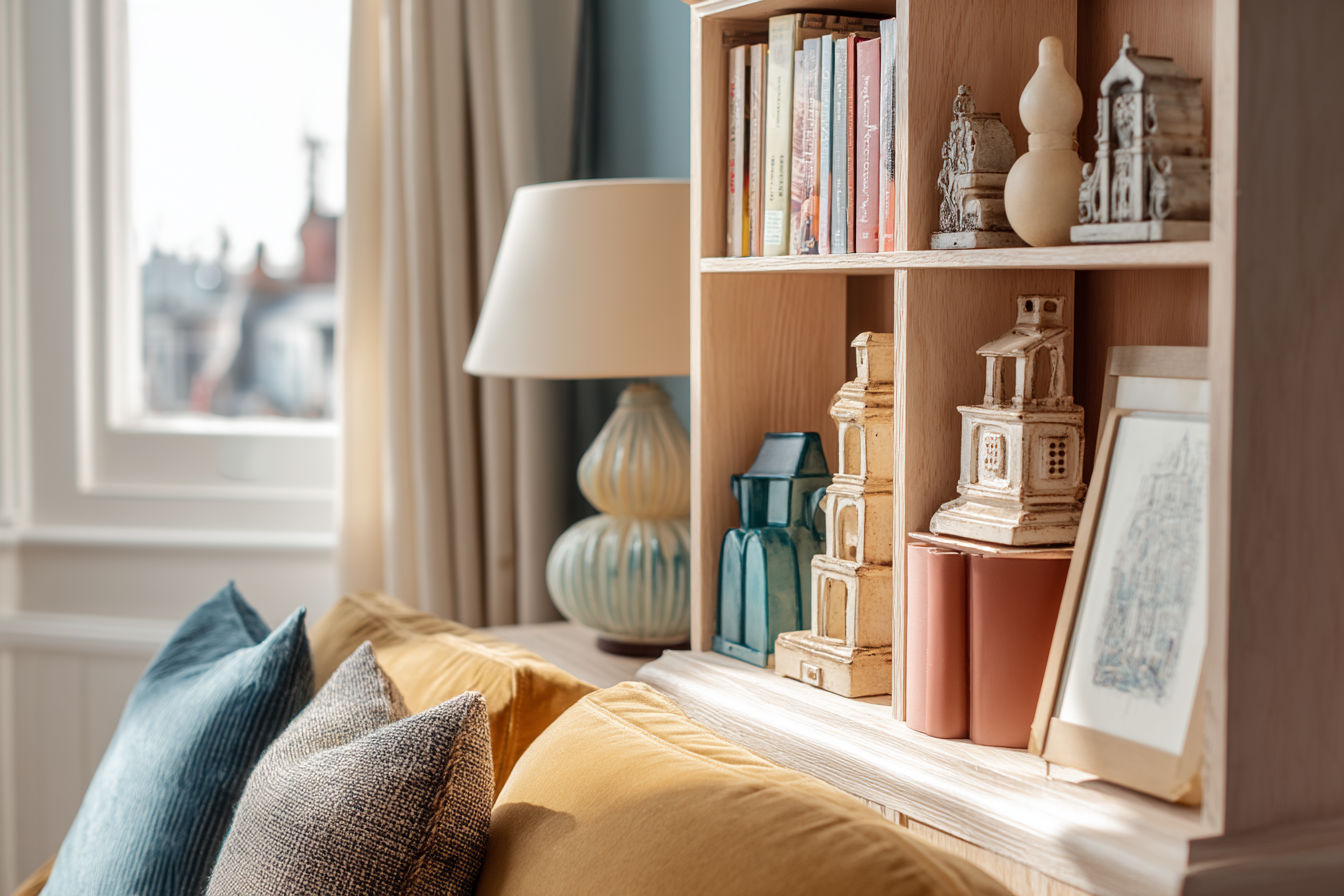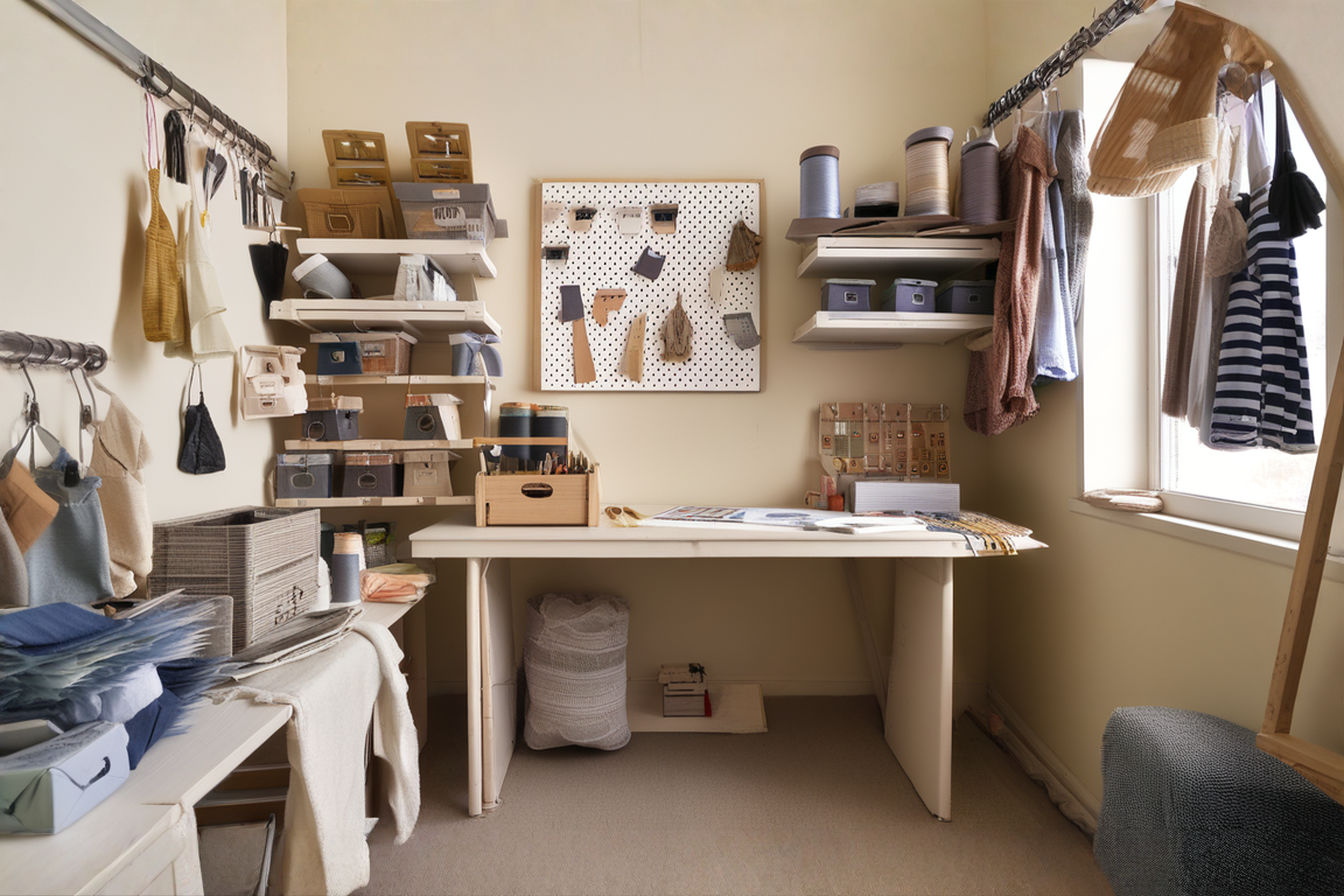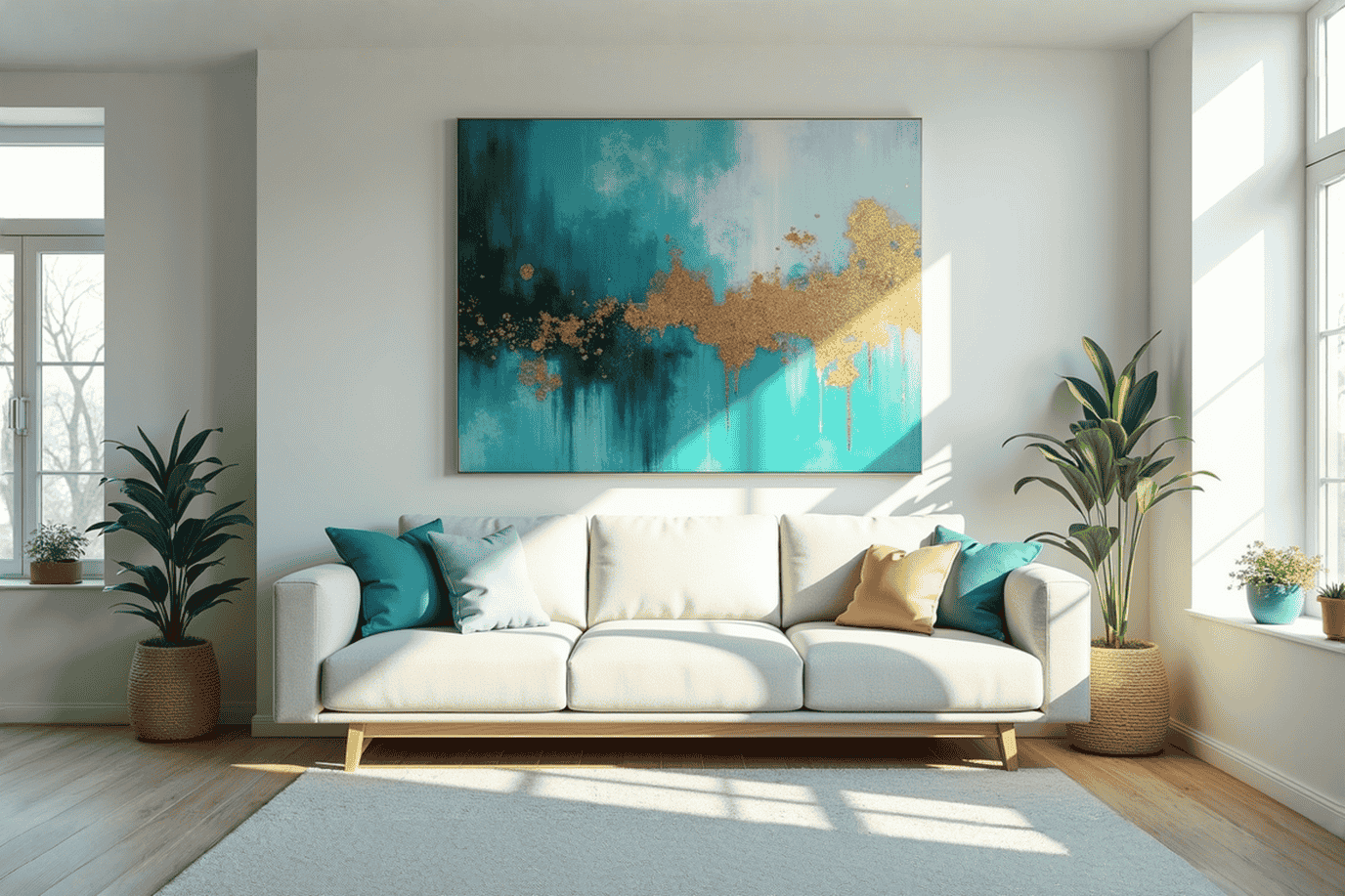This post may contain affiliate links. If you make a purchase through these links, we may earn a commission at no additional cost to you.
Creating a stylish, inviting home shouldn’t require emptying your bank account. The good news? Today’s retail landscape offers more budget-friendly decor options than ever before. Whether you’re furnishing your first apartment, refreshing your family home, or simply adding seasonal touches, finding quality decor at reasonable prices has become increasingly accessible.
In this comprehensive guide, we explore five outstanding home decor destinations that deliver style without the sticker shock. These retailers have mastered the delicate balance of affordability and aesthetic appeal, proving that beautiful living spaces don’t necessarily come with beautiful price tags.
Understanding Budget-Friendly Home Decor
Before diving into specific shops, it’s important to clarify what “budget-friendly” actually means in the home decor world. Budget-friendly doesn’t simply mean “cheap”—it refers to items that offer excellent value for their price point. These pieces deliver visual impact, reasonable durability, and contemporary style without commanding premium prices.
The true art of affordable decorating lies in distinguishing between items worth splurging on and those where savings make sense. While mass-produced merchandise floods the market, boutique-style shopping—even at larger retailers—offers curated collections that eliminate the overwhelming paradox of choice.
Smart decorators understand that mixing higher-end statement pieces with budget-friendly supporting elements creates spaces that look thoughtfully designed rather than hastily assembled. This high-low approach has become the cornerstone of modern interior styling, embraced by professionals and enthusiasts alike.
How to Shop Smart for Affordable Home Decor
Developing a strategic approach to home decor shopping can transform your results. Consider these principles when hunting for budget-friendly decor:
Train your eye to recognize quality. Even at lower price points, look for solid construction, clean seams, and materials that feel substantial. Avoid items that feel flimsy or poorly finished, as these rarely stand the test of time.
Time your purchases strategically. Most home decor retailers follow predictable sale cycles. January, July, and post-holiday periods typically offer the deepest discounts as stores clear inventory. Signing up for retailer newsletters often grants early access to sales and special promotions.
Invest in versatile, timeless pieces. When working with a limited budget, choose items that can transition between different styles and rooms. Neutral-toned larger pieces provide flexibility, while trend-forward accents can be updated more affordably as styles evolve.
Embrace the power of statement pieces. A single distinctive item—whether an interesting lamp, bold artwork, or uniquely shaped chair—can elevate an entire room. Surrounding these focal points with simpler, less expensive items creates balanced, designer-looking spaces without overspending.
Now, let’s explore the five retailers that stand out for their exceptional balance of style, quality, and affordability.
Target’s Threshold & Studio McGee Collections: Affordable Designer Aesthetics
Target has revolutionized accessible home design through collaborations with established designers and innovative in-house brands. The Threshold line, particularly its partnership with Studio McGee, delivers remarkably sophisticated aesthetics at mass-market prices.
Brand Story
Threshold launched in 2012 as Target’s answer to elevated everyday home goods. In 2020, the retailer partnered with Studio McGee, the design firm founded by Shea and Syd McGee, whose Netflix show “Dream Home Makeover” has cultivated a devoted following. This collaboration brings Studio McGee’s signature warm, textural aesthetic to accessible price points.
Price Range and Value
Most Threshold and Studio McGee items fall between $20 and $300, with the majority of decorative accessories priced under $50. These collections offer exceptional value, with designs that emulate high-end boutiques at a fraction of the cost. The quality generally exceeds expectations for the price point, particularly for decorative objects, textiles, and smaller furniture items.
Standout Categories
The collections particularly excel in decorative accessories, textiles, and accent furniture. Their ceramic vases, woven baskets, and decorative objects feature organic textures and neutral palettes that work seamlessly in various design schemes. Throw pillows and blankets deliver the layered, textural look coveted in contemporary interiors without custom price tags.
Lighting represents another strength, with table and floor lamps that appear substantially more expensive than their actual cost. Wall art and mirrors also offer tremendous value, with designs that would be at home in specialty boutiques.
Shopping Tips
Target frequently rotates its Studio McGee inventory, creating a “get it while you can” environment. New collections typically launch quarterly, with the most sought-after pieces selling quickly. The retailer’s generous return policy allows for risk-free purchasing if you’re uncertain about an item.
While some furniture pieces show quality limitations, decorative objects, textiles, and lighting consistently deliver excellent value. The in-store experience offers the advantage of assessing quality firsthand, while online shopping provides the full range of options, often with exclusive online-only pieces.
H&M Home: European Style at Fast-Fashion Prices
H&M Home brings the retailer’s fast-fashion approach to home decor, delivering trend-forward design at surprisingly accessible prices. This Swedish brand excels at capturing current interior trends without the premium pricing typically associated with European design.
Brand Story
Launched in 2009, H&M Home expanded the fashion retailer’s empire into the home goods sector. The collection reflects H&M’s approach to apparel—offering on-trend designs that rotate frequently and maintaining affordable price points through large-scale production. While initially available only online in the US, H&M Home sections have expanded to numerous physical locations.
Price Range and Value
H&M Home’s pricing structure makes it exceptionally accessible, with small decor items starting around $5, textiles between $10-$50, and larger pieces rarely exceeding $200. The value varies by category, with textiles and smaller accessories offering the most impressive quality-to-price ratio. While durability may not match heirloom-quality items, the designs typically look far more expensive than their price tags suggest.
Standout Categories
Textiles represent H&M Home’s greatest strength. Their duvet covers, throw pillows, and blankets often feature natural materials like cotton and linen, delivering a high-end look and feel at moderate prices. Decorative accessories—particularly vases, candle holders, and small storage solutions—capture current trends with sophisticated color palettes and interesting textures.
The retailer also excels at seasonally appropriate decor that allows for affordable home refreshes throughout the year. Their tabletop collections offer particularly good value, with stoneware and glass pieces that elevate everyday dining without significant investment.
Shopping Tips
H&M Home’s inventory turns over rapidly, with new collections debuting approximately every six weeks. Their website often features a wider selection than physical stores, with periodic online-exclusive sales offering additional discounts.
The brand’s premium line, marked by higher price points within the collection, generally offers the best quality-to-price ratio despite the slightly higher investment. Joining H&M’s loyalty program provides early access to new collections and special promotions throughout the year.
IKEA: Scandinavian Sensibility for Every Budget
No discussion of affordable home decor would be complete without including IKEA, the Swedish giant that revolutionized accessible home furnishings. While best known for furniture, IKEA’s decorative accessories and home goods offer exceptional value with clean, functional design.
Brand Story
Founded in 1943 by Ingvar Kamprad, IKEA pioneered the flat-pack furniture concept that transformed the industry. The company’s mission—creating well-designed, functional home furnishings affordable for the many—remains evident throughout their expansive product range. Their democratic design approach brings Scandinavian minimalism to global markets at revolutionary price points.
Price Range and Value
IKEA’s decorative accessories typically range from $1 to $50, with most falling under $30. This extreme affordability doesn’t necessarily compromise design integrity—the company’s Swedish design heritage ensures even their least expensive items feature intentional aesthetics. While quality varies across product lines, their “good,” “better,” “best” tiering system helps consumers make informed decisions about durability expectations.
Standout Categories
IKEA particularly excels in organizational accessories, lighting, textiles, and kitchen goods. Their storage solutions marry form and function with clean lines and practical designs. Lighting options—from simple table lamps to statement pendants—offer exceptional value, often incorporating LED technology for energy efficiency.
The retailer’s plant pots, vases, and decorative accessories present some of the best values in the marketplace, with designs that work in diverse interior styles. Their picture frames, available in consistent styles across multiple sizes, make gallery walls accessible to budget-conscious decorators.
Shopping Tips
IKEA’s physical stores can be overwhelming. Their website allows for focused shopping, though in-store visits provide inspiration through realistic room displays. The company’s “as-is” section offers floor models and returned items at significant discounts—a treasure trove for bargain hunters.
The IKEA Family loyalty program provides members with special pricing on select items and periodic discounts. Their seasonal collections, typically introduced twice yearly, often include limited-edition collaborations with renowned designers at the company’s signature accessible price points.
TJ Maxx/HomeGoods: Treasure Hunting for Unique Finds
TJ Maxx and its sister store HomeGoods operate on an “off-price” model that transforms home decor shopping into a treasure hunt. These retailers offer brand-name and unique items at prices significantly below traditional retail through opportunistic buying and manufacturer overruns.
Brand Story
TJ Maxx, founded in 1976, expanded into home goods before launching the dedicated HomeGoods chain in 1992. Both operate under TJX Companies, which has perfected the off-price retail model. Unlike traditional retailers that purchase seasonal collections months in advance, TJX buyers acquire merchandise opportunistically throughout the year, passing savings to consumers.
Price Range and Value
Prices vary widely based on brands and materials, but decorative accessories typically range from $7 to $100, with significant discounts compared to department store pricing. The value proposition centers on finding recognizable brands or high-quality materials at 20-60% below traditional retail pricing. The merchandise mix changes continuously, creating an unpredictable but potentially rewarding shopping experience.
Standout Categories
These retailers excel in decorative accessories, particularly those made from natural materials like wood, ceramic, and glass. Their selection of decorative boxes, trays, and tabletop accessories often includes pieces that look custom or artisanal. Wall art and mirrors represent another strength, with frames and printing quality that typically exceed their price points.
Seasonal decor offers exceptional value, particularly just after major holidays when clearance pricing makes luxury-looking items remarkably affordable. Their throw pillow and textile selections feature designer fabrics and detailed craftsmanship at fraction-of-retail pricing.
Shopping Tips
Shopping these stores requires a different mindset than traditional retail. The inventory changes weekly, creating a “buy it when you see it” environment since specific items rarely restock. Visiting stores on weekday mornings often provides access to freshly merchandised inventory before weekend crowds.
While HomeGoods focuses exclusively on home items, TJ Maxx stores with robust home sections often feature higher-end brands and unique finds. Both chains’ websites offer online shopping, though the in-store experience provides the full treasure-hunting experience that defines these retailers.
World Market: Global Style at Accessible Prices
Cost Plus World Market brings global design influences to American consumers at moderate price points. This retailer specializes in culturally-inspired home goods that add distinctive character to interiors without custom-import pricing.
Brand Story
Founded in 1958 as a San Francisco import store selling discounted international goods, World Market has evolved into a national chain while maintaining its global procurement approach. The retailer works with artisans and manufacturers worldwide to create exclusive designs influenced by international aesthetics. Their merchandise tells cultural stories while remaining accessible to mainstream consumers.
Price Range and Value
Decorative accessories typically range from $15 to $200, with most falling under $100. The value centers on unique designs with global influences that would otherwise require international travel or specialty importers to acquire. Quality varies across categories, with wood, ceramic, and textile items generally offering the best durability for their price points.
Standout Categories
World Market particularly shines in globally-inspired accessories, distinctive furniture pieces, and unique lighting options. Their baskets, decorative objects, and tabletop accessories feature cultural influences rarely found at comparable price points. Their furniture, while requiring some assembly, offers distinctive silhouettes and materials that stand apart from mass-market alternatives.
The retailer’s textile selection—including curtains, throw pillows, and area rugs—incorporates global patterns and techniques that add authentic character to interiors. Their wall art collection offers particularly good value, with framed prints and textile art appearing significantly more expensive than their actual cost.
Shopping Tips
World Market’s Explorer loyalty program provides meaningful rewards, with members earning points toward discount certificates. The retailer runs frequent promotions, including category-wide sales that create optimal buying opportunities for specific types of merchandise.
While some furniture requires assembly, their decorative accessories arrive ready to display. Their website features more extensive inventory than physical stores, with frequent online-exclusive promotions and free shipping offers on higher-value purchases.
Beyond the Big Names: Hidden Gems for Home Decor
While nationwide retailers offer accessibility and convenience, exploring alternative sources often uncovers unique treasures at remarkable prices. Consider these additional resources for budget-friendly decor:
Local thrift stores and vintage shops provide one-of-a-kind finds with history and character. The unpredictable inventory requires patience, but discoveries can include genuine vintage pieces at fractions of their value. Estate sales similarly offer opportunities to acquire quality items—particularly wooden furniture and unique decorative objects—as families liquidate households.
Etsy sellers specializing in affordable home goods bridge the gap between mass production and true handcraft. Many offer customizable items that appear completely bespoke without custom pricing. The platform’s search filters allow for price-constrained browsing, revealing artisans whose work remains accessibly priced.
Facebook Marketplace and secondhand apps have transformed the resale market, making it easier than ever to find gently-used decor locally. These platforms particularly excel for larger furniture pieces, where purchasing new often commands significant premiums. Patience and strategic searching often reveal designer pieces at dramatic discounts from retail.
Seasonal pop-up markets and craft fairs connect consumers directly with makers, often at wholesale-comparable pricing. These events typically feature local artisans whose small-batch production allows for unique designs without retail markup. Holiday markets particularly offer distinctive decor with handcrafted quality.
DIY Approaches to Complement Store-Bought Items
Strategic DIY projects can elevate budget-friendly purchases while adding personal character to your spaces. Consider these approaches for extending your decor budget:
Frame inexpensive art sources like botanical prints, vintage book plates, or digital downloads to create gallery-quality displays. Simple frames transform modest art sources into substantial wall decor, often at a fraction of gallery pricing.
Customize basic textiles with simple embellishments like ribbon trim, fabric paint, or iron-on appliques. Plain curtain panels and solid-color throw pillows from budget retailers become custom-looking through straightforward modifications that require minimal crafting skills.
Transform thrift store furniture with quality paint and updated hardware. Wooden pieces with solid construction but dated finishes become contemporary through careful refinishing. This approach delivers truly custom pieces with minimal investment beyond time and basic supplies.
Create botanical displays with foraged natural elements or inexpensive grocery store flowers. Simple arrangements in distinctive containers add natural elements that soften and enliven interiors without florist pricing.
For DIY inspiration, Pinterest remains an invaluable resource, along with home-focused content creators on Instagram and YouTube who specialize in budget-friendly transformations. These platforms offer step-by-step guidance for projects across all skill levels.
Creating a Cohesive Look with Budget Finds
Assembling diverse budget-friendly items into a cohesive interior requires intentional curation. These principles help unite varied pieces into harmonious spaces:
Establish a consistent color story throughout your space, limiting your palette to 3-5 colors that appear repeatedly. This approach creates visual harmony even when items come from different sources and price points. Consider selecting one “investment color” for key pieces while using more affordable items for trend colors that might change seasonally.
Repeat materials and textures strategically throughout rooms to create continuity. Natural materials like wood, ceramic, and woven fibers bridge stylistic differences between items. This repetition creates subtle connections that make diverse pieces feel intentionally combined rather than randomly assembled.
Create balance through distribution of similar elements throughout a space. Rather than clustering all statement pieces in one area, distribute visual weight evenly throughout rooms. This prevents the “heavy corner” effect that often occurs when budget constraints limit the number of significant pieces.
Edit ruthlessly to prevent the accumulation of too many small decorative items. Budget decorating sometimes leads to collecting numerous inexpensive accessories that collectively create visual clutter. Rotating seasonal decor while maintaining consistent foundational pieces creates refreshed looks without overcrowding.
Conclusion: Stylish Living Without Financial Strain
Creating beautiful living spaces on a budget requires strategy rather than compromise. The retailers highlighted here—Target’s Threshold and Studio McGee collections, H&M Home, IKEA, TJ Maxx/HomeGoods, and World Market—demonstrate that style accessibility continues expanding across price points. Their offerings, complemented by thrifted finds and strategic DIY, enable truly personalized interiors without financial strain.
The most successful budget-friendly spaces share a common attribute: intentional curation rather than collection. By selecting pieces thoughtfully, considering how they’ll interact with existing items, and focusing on quality over quantity, you’ll create environments that reflect personal style rather than financial constraints.
Remember that beautiful homes evolve over time. Approaching decor as an ongoing creative process rather than a one-time spending event allows for gradual improvement and refinement. This measured approach not only respects financial boundaries but often results in more authentic, personally meaningful spaces that truly feel like home.






